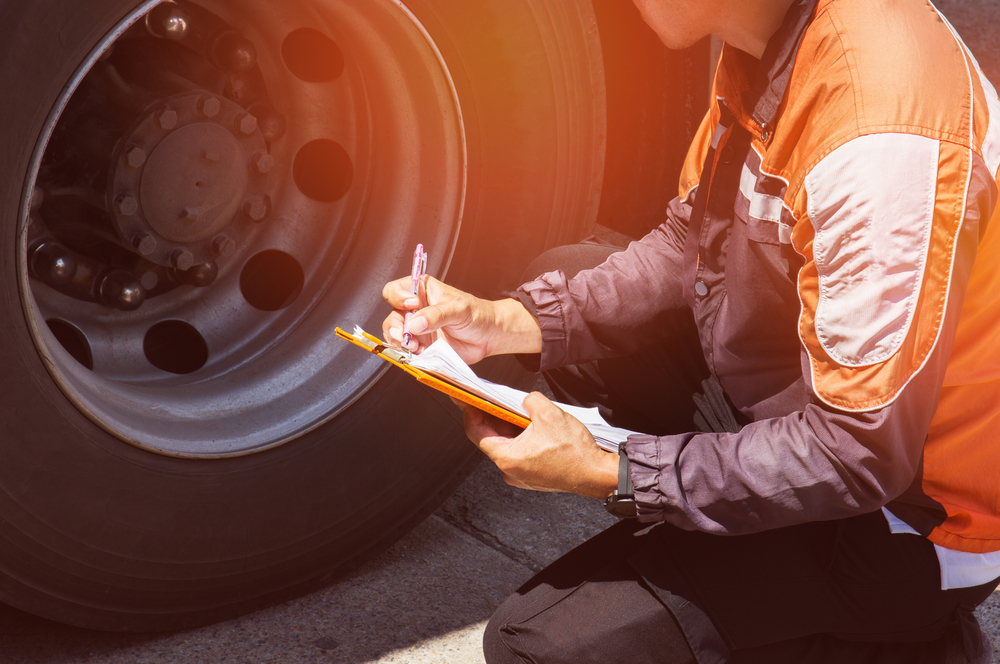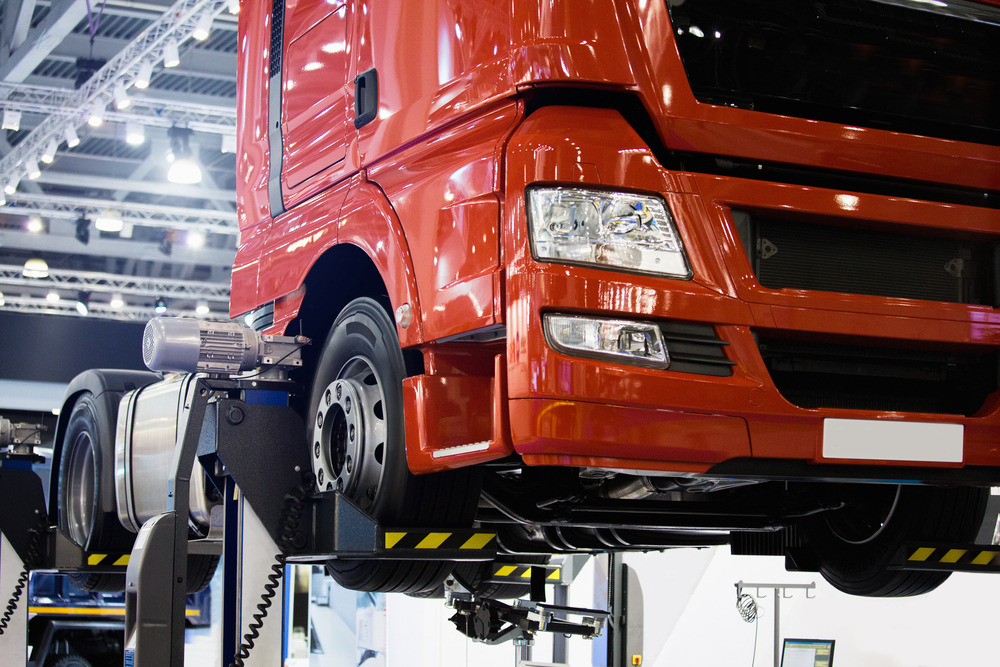Trucks are the unsung heroes of your business, helping you transport and deliver goods promptly, run operations seamlessly, and meet customer needs efficiently. They’re pivotal in keeping the gears of commerce turning.
However, trucks require diligent maintenance to perform at their best. Otherwise, they may experience several issues, such as breakdowns and costly repairs that may disrupt your business operations.
This guide presents a truck maintenance checklist and expert tips to keep your vehicle in great shape. It covers everything, from changing the oil to looking after your tires. Don’t wait for issues to pop up—learn how to maintain your truck today and make it last longer.
Truck Maintenance: How Frequent Should It Be?
Truck maintenance schedule can vary depending on several factors, including the type of truck, its usage, and the manufacturer’s recommendations. Typically, your truck should undergo the following essential checks and maintenance:
- Every 10,000–12,000 kilometers – Rotate tires to ensure even tread wear and a longer lifespan.
- Every 25,000 kilometers – Inspect lights, test brakes, and replenish vital fluids.
- Every 45,000 kilometers – Conduct minor repairs and change the oil and filters for optimal performance.
Once a year – Check engine performance and overall vehicle condition.
Truck Maintenance Checklist
There are two types of truck maintenance: preventive and demand. Preventive truck maintenance involves routine checks and servicing to keep your truck in peak condition and ensure it rolls smoothly without unexpected hiccups. It’s usually scheduled based on mileage, engine hours, or time, as the truck manufacturer recommends.
On the other hand, demand truck maintenance addresses issues as they arise. It’s often more expensive because it leads to unplanned downtimes and replacement of failed parts.
Preventive Maintenance Checklist
You know what they say: prevention is always better than cure. Here are some preventive truck maintenance tips to save time and money in daily operations.

1. Inspect truck for fluid leaks
Fluid leaks can cause engine overheating, transmission failure, and other serious truck problems. When checking, park your truck on a level surface and look for any signs of fluids under it and around the engine and transmission.
Note that some leaks may not be visible behind components or are too small to see. So, bring your truck to a qualified mechanic for a thorough inspection.
2. Check engine oil and filter
Engine oil lubricates, protects, and reduces friction in your truck’s engine, while the oil filter removes debris. To check, turn off the engine, find the dipstick under the hood, and wipe it clean. Insert it fully, then pull it out to check the oil level indicated by markings or crosshatching.
Add oil if it is below the minimum mark. Ensure the oil is all liquid and appears brown or black; a milky look may indicate coolant leakage, while metal particles suggest engine damage.
3. Test auxiliary systems
Auxiliary systems such as seatbelts, horns, and door locks contribute to driver safety and overall comfort. As such, they should always be in order. For instance, seatbelts that are not tight enough cannot secure passengers well in their seats. You should also check horns to know if they’re loud and clear.
Then, check if you can lock the doors securely. If you encounter problems with these checks, bring your truck to a mechanic to fix them.
4. Check truck cab
The cabin or cab is your truck driver’s primary workspace. Always keep it clean and check seats for wear, damage, or loose components. A comfortable and properly functioning seat is essential for long hours on the road.
You should also test the steering wheel, pedals, gearshift, and dashboard switches for mechanical issues. Last but not least, verify that the airbags work to protect your truck driver in case of an accident.
5. Tighten components
Over time, vibrations and wear can loosen or make various truck components fall off. Inspect your vehicle for loose or visibly damaged parts and tighten them with the appropriate tools, such as wrenches, socket sets, or torque wrenches.
Follow your truck manufacturer’s recommendations regarding the correct torque specifications for each component, as under or over-tightening them can lead to serious problems.

6. Check brakes
Regular brake maintenance helps maintain safety on the road while preventing accidents and brake-related problems. It also reduces the risk of costly repairs and ensures reliable stopping power.
Inspect brake pads, shoes, discs, drums, fluid levels, and lines for signs of wear, damage, or potential issues. Additionally, ensure the brake pedal feels firm. Test the parking brake and check the calipers or wheel cylinders for proper functioning.
7. Rotate tires
Rotating your truck tires promotes even tire wear, extends their life, and maintains optimal vehicle performance.
Identify the tire rotation pattern specified in your truck’s manual to rotate them. Typically, this step involves moving the front tires to the rear and vice versa or following a recommended crisscross pattern. Ensure that the lug nuts are loosened before lifting the truck, and use a jack and jack stand for safety.
After rotating the tires, retighten the lug nuts in a star or crisscross pattern to the suggested torque and recheck if the tire pressure matches the manufacturer’s recommendations.
Demand Maintenance Checklist
Your truck will likely travel on different roads and terrains, making it susceptible to wear and tear and accidents. This is where demand truck maintenance comes in. Follow the checklist below to keep your vehicle in shape after prolonged use and prevent further damage.
1. Replace batteries
Old car batteries can lead to several issues, such as difficulty starting the engine, reduced electrical performance, and the risk of getting stranded.
To replace them, turn off the engine and disconnect the negative (black) and positive (red) battery cables. Remove any battery hold-down or securing brackets and carefully lift out the old battery. Install the new battery in the same position, secure it with brackets, reconnect the cables, and tighten them securely.
2. Repaint the exterior
A truck’s paint can fade, peel, or become damaged because of exposure to various elements. Letting it chip away can make your vehicle look visually unpleasant and lose its external protective barrier.
The first step to repainting your truck is cleaning and sanding its surface to remove old paint. Apply a primer to ensure proper adhesion, then the new paint in thin and even coats. Allow each coat to dry before the next application. Finish with a clear coat for added protection and a polished appearance.

3. Replace broken or deteriorated structures
Wear, rust, and environmental factors can weaken critical components such as frame members, panels, or supports. They can make your truck susceptible to structural damage or diminish its load-bearing capabilities.
To replace these structures, identify the damaged parts and order appropriate replacement components from the manufacturer or reputable suppliers. Once you have the necessary parts, support your truck on jack stands, remove the damaged structures, and replace them with the new components.
4. Get new springs
Truck springs absorb and distribute force and impact from the road surface to the vehicle’s chassis, reducing vibrations and ensuring stability. If they weaken or sag, they decrease your truck’s suspension performance and compromise its strength.
Before replacing them, prepare the suspension system at least three days in advance to loosen it with oil. Then elevate your truck, remove the loosened lug nuts, slide off the rear wheels, and remove the base plate.
Remove the old springs and carefully install the new ones, ensuring they’re correctly aligned and properly seated. Double-check all connections and fasteners and see if the vehicle’s alignment and suspension settings align with manufacturer specifications.
5. Check the engine
One of the many indicators on a truck dashboard is the check engine light, which will activate when major components become faulty. If turned on, you may have a loose or broken fuel cap, a dirty or faulty mass airflow sensor, a damaged oxygen sensor, or a worn-out catalytic converter.
To resolve these issues, conduct a diagnostic scan for error codes or irregularities in the engine system. You should also check oil levels, spark plugs, and engine compression per the manufacturer’s guidelines.
6. Install new windows
Truck windows can get scratched, cracked, or chipped if your vehicle typically travels across rough terrains and narrow roads. Consequently, these types of damage can impede your driver’s line of sight and potentially compromise the truck cabin’s structural integrity.
If you have a broken or significantly scratched window, safely remove it and the vapor barrier from the frame. Vacuum any glass shards, too. Then, clean the window frame thoroughly and apply a suitable adhesive or sealant to create a watertight seal.
Carefully place the new window into the frame, secure it in place, and allow the adhesive to cure, following the manufacturer’s recommendations.
7. Replace lights
Truck drivers may prefer to drive at night to avoid traffic, making headlights and tail lights paramount for safe and efficient journeys. Without proper lighting, driving at night can be challenging and increase the risk of accidents.
If you have damaged headlights, open your hood and disconnect the wires in the headlight housing. Carefully remove the old lights; otherwise, you’ll likely need to replace the entire headlight housing if you accidentally damage one of the locking tabs. Insert the new bulb, then close the locking tabs.
As for tail lights, open your trunk or rear hatch, remove the old bulbs and tail light assembly, and install the new bulbs. Hand-tighten the bolts when putting the assembly back in place to avoid damaging the housing and reinstall the bulb holders.
Make Your Trucks Last Longer
Regular truck maintenance is key to keeping your vehicles performing at their best. Proper upkeep extends their lifespan and saves on costly repairs and downtime, allowing you to expand your fleet.
Asialink Finance Corporation is ready to support your company’s growth with truck loans tailored to your business goals. Whether you’re upgrading, expanding, or maintaining your fleet, our loan finance company can help sustain your plans.
Don’t miss the opportunity to drive your business to success—apply for a loan today.






